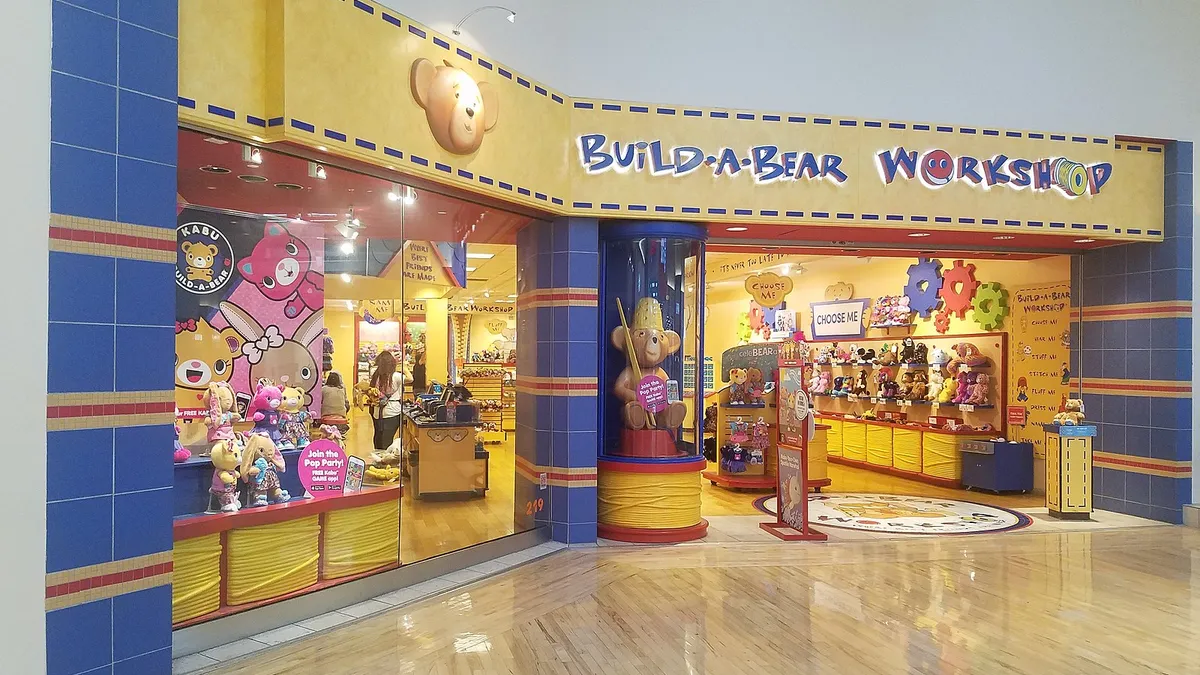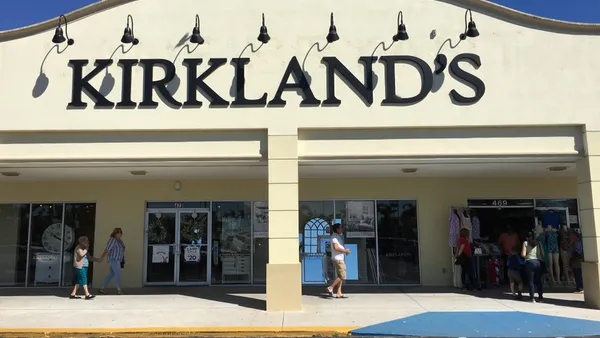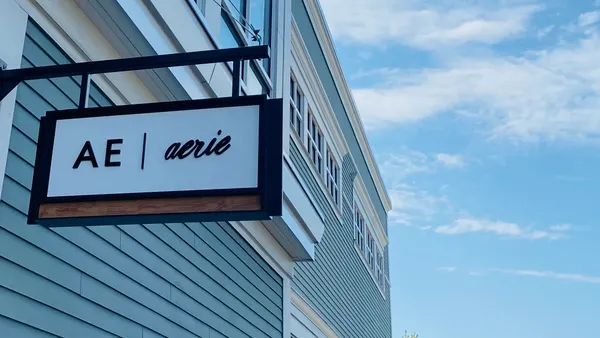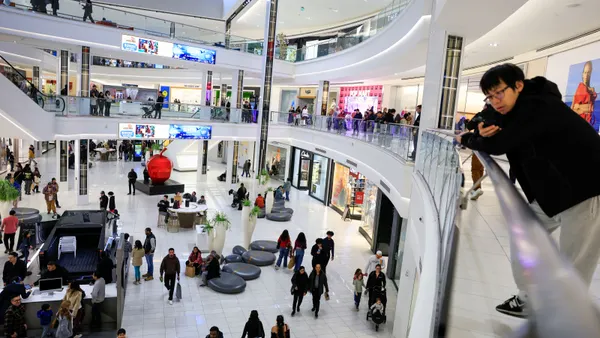Dive Brief:
- After the pandemic slashed its revenue nearly in half two years ago, Build-A-Bear Workshop, Inc. last week reported record revenue of $117.7 million for Q1 — a 28.4% increase year over year, according to a press release. That's on top of 97% growth last year.
- Net retail sales for the toy company were up by 26.6%, with a third of the increase due to the reopening of European stores which had been closed for a majority of Q1 2021.
- The company’s gross profit margin was down to 52.5% from 52.8% last year, stemming in part from “an unprecedented increase in transportation costs as well as other inflationary pressures,” per the release.
Dive Insight:
As stores reopen globally, it seems more shoppers are looking to build bears. Build-A-Bear Workshop’s first quarter earnings show that in-store shopping is increasing for the retailer, but the company is still dealing with industrywide obstacles such as higher transportation costs.
Over the past few years, the toy company has focused on expanding its e-commerce business, appointing new digital executives and launching a 3D workshop last November. Consolidated e-commerce orders grew 2.1% this quarter compared to last year.
“Our disciplined focus and agility, particularly during the prolonged pandemic-related challenges, have played a key role in the evolution of our company into a more digitally-driven, diversified omnichannel entity that includes a dynamic and efficient vertical experiential retail concept that remains relevant to today’s consumers who have been increasingly seeking highly engaging, family-friendly activities and shopping as restrictions have lifted,” President and CEO Sharon Price John said in a statement.
In comparison, toy giant Hasbro’s Q1 results weren't quite as favorable, with the company saying $100 million in revenue was at risk due to suspended shipments to Russia. The retailer reported a revenue increase of just 4% year over year and a 20% operating income decrease.
Build-A-Bear’s Q1 results follow a month of overall turmoil in retail, as inflation and transportation costs took a toll on the industry. Target’s profit collapsed in Q1 as fuel prices surged, Walmart’s operating income took a $1 billion haircut and Bath & Body Works cut its profit estimates for the year.















